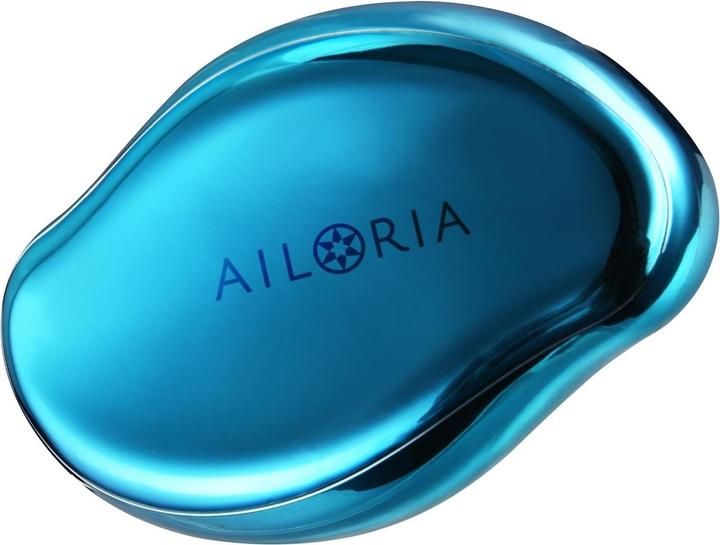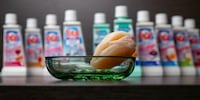

The basics of foot care: how to give your own pedicure at home
You stand on them all your life and cover thousands of kilometres with them. With so much work, they deserve all your care and attention. A pedicure guide for at home.
According to conservative estimates - and of course depending on lifestyle, health and physical fitness - the average person walks between 100,000 and 180,000 kilometres in their lifetime. These figures are based on the assumption that you take between 6,000 and 10,000 steps a day.
There are several factors that determine a healthy, pain-free gait: the right footwear and socks play a not insignificant role - and you can only really walk comfortably if your nails are trimmed correctly and your calluses have been planed to a healthy size. So, what's important?
The basics of foot care
Over the course of the year, the majority of our feet are in socks. But that shouldn't mean: out of sight, out of mind. After all, it's not just those parts of the body that are always on show that need a skincare routine - such as face, skin and hair.
Ideally, you should give your feet a little pampering every day: Your morning shower and washing routine should include soaping and washing your feet. However, it takes more than that to prevent excessive calluses, ingrown nails, corns or even a fungal infection.
Step by step to proper foot care
1. foot bath and cleansing with mild soap
Foot baths not only help with cold feet, migraines and sleep problems. They are also essential if you want to properly care for the skin on your feet and toenails and, if necessary, get rid of calluses. The water should not be warmer than 40 degrees. Ten minutes is a good length of time. However, you should stop before your feet become wrinkly. The foot bath will make your toenails nice and soft and easier to cut afterwards.
2. dry well, also between the toes
Important! Because wherever the feet are not completely dry, there is a risk of athlete's foot developing. At least if the foot remains permanently damp, for example if you put on socks straight away and step into tight, closed shoes. So dry the spaces between your toes with a towel.
3. exfoliation or planing off the callus
The pumice stone, for example, has proven to be a good tool for removing calluses thanks to its naturally rough structure. However, special callus planes should only be used carefully - or better left to the professionals. Because if you rasp off too much callus, you increase your susceptibility to germs and the risk of injury to your skin.
Calluses are normal, especially on the feet, and are a healthy protective function of the skin: the horny layer thickens and hardens, especially on the soles and heels, to protect these parts of the foot that are particularly exposed to pressure and friction from moisture loss and external factors. However, if too much dead skin material accumulates, which can no longer flake off on its own, the risk of fissures and cracks increases, which in turn can harbour germs. Excessively dry skin on the feet also favours the formation of calluses, as do shoes that are too tight or misaligned feet, which can lead to pressure points and corns.
4. Trim your nails!
Use a file instead of scissors. Cutting can cause tiny cracks to form in the nail, making it susceptible to major damage. When shortening, make sure that your nails are neither round nor tapered. Instead, keep them straight - and not too short, as can be seen in this illustrative drawing from Stiftung Warentest: "The nail corners remain on the sides, the nail ends with the tip of the toe at the front," it says.
The reason: This prevents ingrown nails, which in turn can lead to painful nail bed inflammation. Rounded toenails also make it easier for germs to penetrate under the nail. And if the tip of the toe is too exposed with very short nails, the pressure in the shoe can also affect the nail bed. Last but not least: It is better to leave the cuticles untouched and, if you do, only push them back carefully with a bevelled wooden spatula after you have soaked your feet well beforehand.
5. no special cream necessary
Special creams are available for almost all skin types, but a greasy cream such as a body butter will usually do the trick for your feet. Important: Leave out the spaces between your toes to avoid creating a moist climate, which in turn creates better conditions for athlete's foot. Urea is good in creams, but the proportion of urea should not be too high: At a urea concentration of 40 per cent the urea causes the corneal cells, and therefore the corneal layer, to be destroyed.
Since the ingredient can also cause skin irritation such as stinging, burning, redness and itching, it is better to use such high-percentage urea creams under the supervision of a competent professional. For home use, use lower-dose care products containing between five and a maximum of fifteen per cent. If you have wounds on your feet, it is better to avoid urea altogether.
6. wash and disinfect tools after use
Organisation and hygiene are essential. Just as you take care of your feet, you should also take care of your tools. So wash them well after use and, ideally, disinfect them
7th extra: nail polish
It's no longer a big deal for men to wear nail polish even if their name isn't Mick Jagger, Kurt Cobain or David Bowie. On social media, you can find inspiration on Instagram under the hashtag #menicure or on TikTok under the hashtag #malenailart. Otherwise, colourless polish will also do for a beautiful shine. Applying nail polish is an art in itself - in any case, it's important to only start priming and colouring after your pedicure once your feet are completely dry and the cream has been absorbed well.
Special needs: What to do for corns, athlete's foot, diabetes
People with diabetes often cannot feel their feet very well or not at all due to their increased blood pressure. They are therefore at increased risk of not only wearing shoes that are too tight, but also of using too hot water or scraping off the callus too roughly during foot care. It is therefore essential to pay attention to the reduced foot sensation or to have foot care carried out by specially trained medical or podiatry professionals. In the specialist book "Ambulante Pflege von A bis Z" is a warning: "Even the smallest injuries here can lead to difficult-to-heal wounds with a risk of infection."
Corns, medically known as clavus pedis, usually occur when the pressure is permanently too high in isolated areas (e.g. on the ankles and where the skin is particularly thin). It is advisable to wear slightly larger shoes and compensate for the available space with thick socks instead of squeezing your feet into tight shoes. Long periods of walking or standing should also be avoided, especially on hard surfaces or in shoes with hard soles, such as work shoes with steel toecaps.
Fungus, on the other hand, usually develops in a damp environment. In addition to drying your feet thoroughly, preventative measures include breathable shoes and loose-fitting, non-lacing socks - which you should definitely wash at 60 degrees to kill all bacteria. In addition, public baths and showers are often breeding and germ cells for fungi of all kinds, which is why you should always wear slippers in the sauna and swimming pool. This is because small injuries such as cracks, cuts and abrasions provide the best targets for athlete's foot infections.
Notebook, camera, laptop or smartphone. For me, life's about taking notes – both analogue and digital. What's always on me? My iPod Shuffle. It's all in the mix, after all. This is also reflected in the topics I write about.
Practical solutions for everyday problems with technology, household hacks and much more.
Show all






